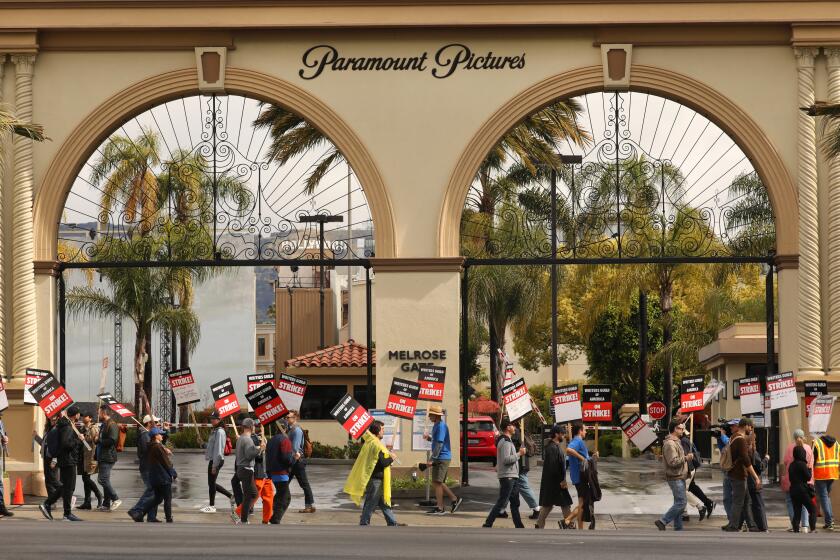Student loan payments are back. Is it time to consolidate your credit card debt?

- Share via
The federal student loan payment pause that began in March 2020 is ending. Loans began accruing interest Sept. 1 and borrowers will start making payments in October.
But the restart comes at a tricky time for Americans’ finances. Credit card debt is at a record high — $1 trillion, according to the Federal Reserve Bank of New York — and student loan borrowers may struggle to prioritize different types of debt.
Credit card debt is especially damaging to your finances because of its high, compounding interest. As money gets tighter, consolidating your credit card debt under a no- or low-interest product may be a smart move.
Increased debt for student loan borrowers is ending.
With no student loan bills for the last three-plus years, borrowers may have used the space in their budget to take on other types of debt.
More than half of all federal student loan borrowers took out a new bank-issued credit card during the pandemic, while 36% got an auto loan and 31% signed up for a retail credit card, according to a July TransUnion study.
If you have federal student loans and are in an industry sidelined by strikes, here’s how you can have your payments based on your current, lowered earnings.
Liz Pagel, senior vice president of consumer lending for TransUnion, said that although some debt acquisition was a natural result of young consumers aging into new credit obligations — such as their first credit card — the issuing of new credit also jumped to levels not seen even before the COVID-19 pandemic.
“Lenders made up for lost time, and then some,” Pagel said. “There was just a lot of adding to credit, and consumers that had student loans in forbearance were not immune from that.”
It’s not only new types of debt, but more of it. Borrowers with student loans face 24% higher median payments on other debt obligations than they did before the pandemic, the Consumer Financial Protection Bureau reported in June. For borrowers ages 18 to 29, median payments have soared 252%.
The Biden administration announced a 12-month “on-ramp repayment program” to ease the transition, during which missed federal student loan payments won’t be reported to the credit bureaus, and you won’t default. But loans will still accrue interest, so you should pay if you can.
Consolidating credit card debt
Alhough you want to make progress paying down all your debts, credit card repayment should be a top priority, said Rosario Chacon, a Certified Financial Planner and certified student loan professional in Oakland.
Now that the Supreme Court has struck down President Biden’s loan forgiveness plan, companies are looking to offer student debt repayment as a benefit.
“If worse comes to worst with the federal system, you can ask for forbearance,” Chacon said. “But with credit cards, there’s no forbearance to protect you.”
“Credit cards are so much less flexible than the federal student loan system,” said Tricia Kollath, a Certified Financial Planner and certified student loan professional in Gulfport, Miss. “You can’t call your credit card company and say, ‘Oh, I can’t make my payment this month.’ They’ll take you to court.”
Both Chacon and Kollath suggest evaluating your budget as soon as possible to figure out how to keep paying down credit card debt as student loan payments restart.
One option may be consolidating your credit cards under a 0% balance-transfer card or a debt consolidation loan, which saves money on interest and frees up additional cash.
With a 0% balance-transfer card, you transfer your credit card balances to the new card and pay off the debt at no interest during the promotional period, sometimes 18 months or more. But these cards are available only to borrowers with good or excellent credit, generally scores above 689.
Fixed-rate debt consolidation loans are available to borrowers across the credit spectrum at banks, credit unions and online lenders. As long as you qualify for a rate lower than the rate on your credit cards, you’ll save money on interest.
The 50/30/20 budget was popularized by Sen. Elizabeth Warren and her daughter Amelia Warren Tyagi in their book, “All Your Worth: The Ultimate Lifetime Money Plan.”
Other strategies to pay off credit cards
If consolidating isn’t an option, you can use popular DIY strategies, such as the snowball or avalanche methods.
With the snowball strategy, you pay off your smallest debt first, then work your way up, applying newly freed-up funds to each new debt. This can help you build momentum as the amount you’re paying on each debt grows.
With the avalanche strategy, you pay off the debt with the highest interest rate first, then work your way down, applying your increased savings in interest to each new debt.
Either is a great option for tackling credit card debt, because you’ll have a clear strategy you can follow, Kollath said.
“Whenever I work with people who are in debt, they don’t even want to talk about it, they’re so stressed,” she says. “But working towards a goal and seeing things get paid off is really good for your mental health.”
Veling writes for personal finance site NerdWallet. This article was distributed by the Associated Press.
More to Read
Inside the business of entertainment
The Wide Shot brings you news, analysis and insights on everything from streaming wars to production — and what it all means for the future.
You may occasionally receive promotional content from the Los Angeles Times.













